Ao Maya, Ko Phi Phi Leh: Forever the paradigm
A look at the past and current state of a legendary marine site, which is still getting accustomed to its new management protocols.
Welcome to Thai Island Quest, sharing the beauty, challenges and distinctive identities of Thailand’s islands and coastal areas. Yes, all of them.
Ko Phi Phi Leh’s towering trilateral cliffs provide a fitting intro to this geological wonder of an island when seen from its larger neighbor, Ko Phi Phi Don, a few km away. Even from a distance, Ko Phi Phi Leh is gripping.
Gripping are its almost entirely vertical limestone cliffs that reach hundreds of meters into the air. Gripping, too, is its fragile marine environment, which is now partially protected from large-scale boat traffic. Equally gripping, perhaps, is the story of this small island and its legendary beach, Ao Maya.
The paradigm
As with other limestone-karst islands in Thailand’s Andaman Sea and beyond, Ko Phi Phi Leh hardened into cliffs from the remains of reefs and other bio-material left over from the marine transgressions of the Triassic period some 200-250 million years ago, when a warm planet made the oceans far deeper than they are today. The karst found at Ko Phi Phi Leh is bigger than most.
When viewing the island up close with its countless overhangs, caves and nooks pegged into the rocks, it is easy to imagine the indigenous Urak Lawoi seeking shelter amid the cliffs in centuries past. Living permanently in multiple settlements over on Ko Phi Phi Don today — as well as on Ko Phuket, Ko Lanta, Ko Jum and other nearby islands — these “sea people” still go to Ko Phi Phi Leh, albeit most often as boat drivers showing tourists an island that their people knew long before it became part of Hat Noppharat Thara - Mu Ko Phi National Park in 1983.
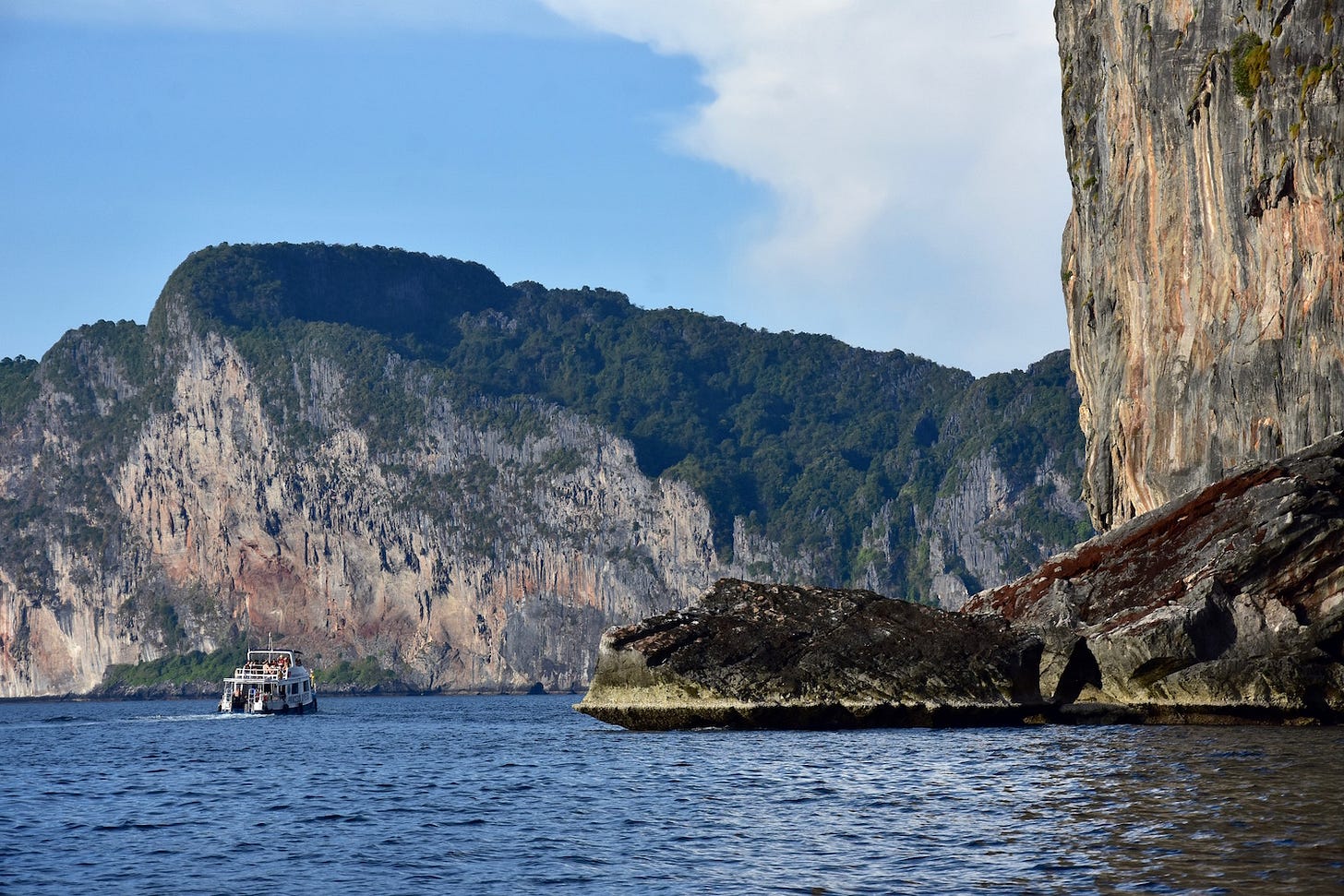
Then, as now, these very cliffs would have limited land access on the island to little more than a single point: Ao Maya.
This brilliant beach is a focal point not only of the Phi Phi islands today, but also of an increasingly urgent and consequential conversation about how tourism and environmental preservation should co-exist in Thailand and beyond.
A lot is at stake at Maya Bay. It is widely seen as a model, or litmus test, for Thailand’s broader marine conservation strategy.
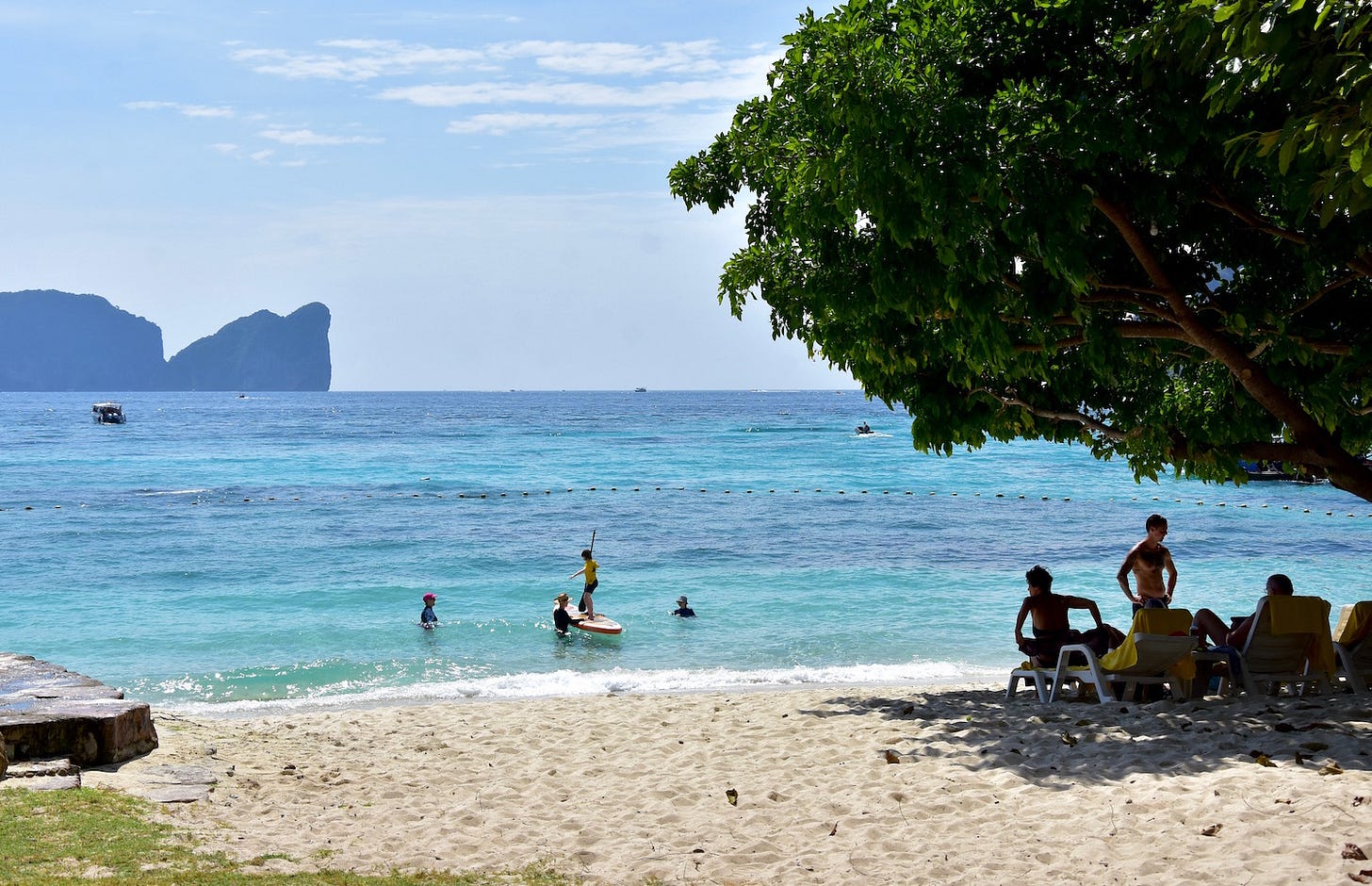
Above all, Ao Maya is a magnet for attention — probably more than any other beach in Thailand. Look for it in a gazillion social-media posts and almost as many “best beaches” listicles and blog posts and Youtube videos.
The most beautiful? The most visited? The most destroyed? The most talked about? The big environmental come-back story? The model for the future?
Maya Bay is often held up as an example of all of the above. In so many ways, it is the paradigm by which other Thai beaches are judged.
Superstar sand
By the beginning of the 1980s, Ao Maya had already become a focus of boat tours. For a while, owing to the relatively small numbers of foreign backpackers and domestic travelers who took these tours, the situation was sustainable.
By the mid 2010s, though, the boat tours had become so numerous that as many as 8,000 revelers crammed into the site per day, producing an almost shoulder-to-shoulder crowd on Ao Maya during peak times. With their propellers whirling, speedboats backed up directly onto the sand, like trucks into a loading dock. By 2017, nearly all of the coral was dead or badly damaged.
Some would say that Ao Maya’s trajectory to becoming a poster child for tourism mismanagement began when it was cast in the title role (okay, as the setting) for the film, The Beach, based on the novel of the same name by Alex Garland. It’s a superficial portrayal of Thailand and not a great film, in my view, but the casting of a 24-year-old Leonardo DiCaprio ensured box office success. Fans wasted no time in visiting “the actual beach (bro!),” and mass tourism followed.
For years, the boats rolled in thick with the tides from Phuket in the west, Krabi in the east, Ko Lanta to the south, and, of course, the cramped party hub at Ko Phi Phi Don right next door. Back then, authorities did little to protect Ao Maya. In fact, the head of the national park was sacked in 2015 after allegations of, as reported by The Phuket News at the time, “about 30 million baht that has not been accounted for.”
Given Ao Maya’s photogenic beauty, star-studded past and location near so many other major tourism areas, combined with an uptick in Thailand’s international tourist arrivals from roughly 20 million in 2010 to nearly double that by 2018, something needed to be done. “Save Maya Bay” became a rallying call.
Then, quite abruptly in June 2018, Ao Maya was shut off to tourism, and the initial six-month closure became indefinite. Though the bay’s rejuvenating environment was often cited in media coverage about positive side effects of the pause in global travel that resulted from the pandemic, it’s worth noting that authorities did close the site more than a year before the first Covid cases appeared. The rehabilitation of Ao Maya was not a pandemic project, even if the global pause may have given it extra breathing room.
As shown in an excellent 2020 video from Ocean Quest Global, an organization involved in rehabbing Ao Maya, the conservation efforts have been undertaken in earnest. As most of Thailand stayed home during the Covid waves of 2021, stingrays and reef sharks returned to a remarkably quiet Ao Maya. Only a few lucky divers, researchers and park rangers were allowed to be there.
Then, as many local tourism business owners, boat drivers and guides waited desperately for tourists to return, Ao Maya got a soft reopening on January 1st, 2022. A few tourists, travel writers and reporters were lucky enough to visit before or shortly after Thailand dropped its Covid entry rules later that year, reopening the gates to millions of foreign arrivals for the first time since early 2020.
The Ao Maya of today, as with the rest of Thailand, exists in a vacuum between the tourism shutdown that is behind it and the tourism boom that may well lie ahead. With international travelers finally returning in sizable numbers, will the management of Ao Maya that is currently in place work in the long term?
The answer could depend on how Thailand’s broader tourism situation develops over the coming years. If the Tourism Ministry gets even half of its stated target of 80 million international arrivals annually by 2027, that would make it very hard for me to see how the balancing act currently on display at Ao Maya could be sustained. Don’t forget, the beach is only a couple of hundred meters long!
A first-timer’s impressions
Believe it or not, I waited until a couple of weeks ago to visit Ao Maya for the first time in my life. It and the rest of Mu Ko Phi Phi had been dutifully covered by other writers when I was with Travelfish, and, given how crowded it was back then, I never had the urge to go on my own, despite spending a lot of time nearby.
Having finally seen it up close for myself, I will tell you this: Ko Phi Phi Leh is, without question, one of the most stunning islands in Thailand.
The Thai islands that are most similar — in terms of the crystalline water and white sand joined by the dramatic karst cliffs — include Ko Hong, Ko Phetra and Ko Lao Liang, as well as parts of Mu Ko Ang Thong and Mu Ko Chumphon. But given its inclusion of not only a dazzling lagoon and gnarly cliffs but also a truly unforgettable beach in Ao Maya, Ko Phi Phi Leh stands in a class of its own.
The cliffs! My goodness, the cliffs. They are at least as jaw-dropping as any I’ve seen on any Thai island. I was struck by the immensity of them and the ruggedness of the entire island. Apart from the roughly 400 sq. meters of wooded flatland and beach at Ao Maya, Ko Phi Phi Leh is almost entirely composed of limestone. As if pierced by a giant, Viking Cave cuts clean from one coast to the other.
When I look at Ko Phi Phi Leh on a map or in aerial photos, I see a sprawling dragon frozen in rock. The fire-breathing mouth? Of course, it is Maya Bay.
So how does Ao Maya look?
As gorgeous as I’d hoped. Visitors are closely watched, though. No swimming is allowed, and a national park worker kept blowing his whistle to call out visitors who tried to wade more than a meter or two offshore (ankle-deep is allowed). To his credit, the whistler let some little kids shimmy a little further out into the clear turquoise shallows. Given the relatively thin crowd, everyone had more than enough space to stroll and lounge. Everyone I saw acted respectfully.
Apart from the whistler, Ao Maya was quiet on this day during peak tourism season 2023. Some people took selfies. Others simply plopped themselves down and basked, just like Jack — Leo D’s character in The Beach — in the moment when he first discovers this magnificent spot after a tenuous journey. I could hear the water lapping onto pillowy white sand; just like in the movie.
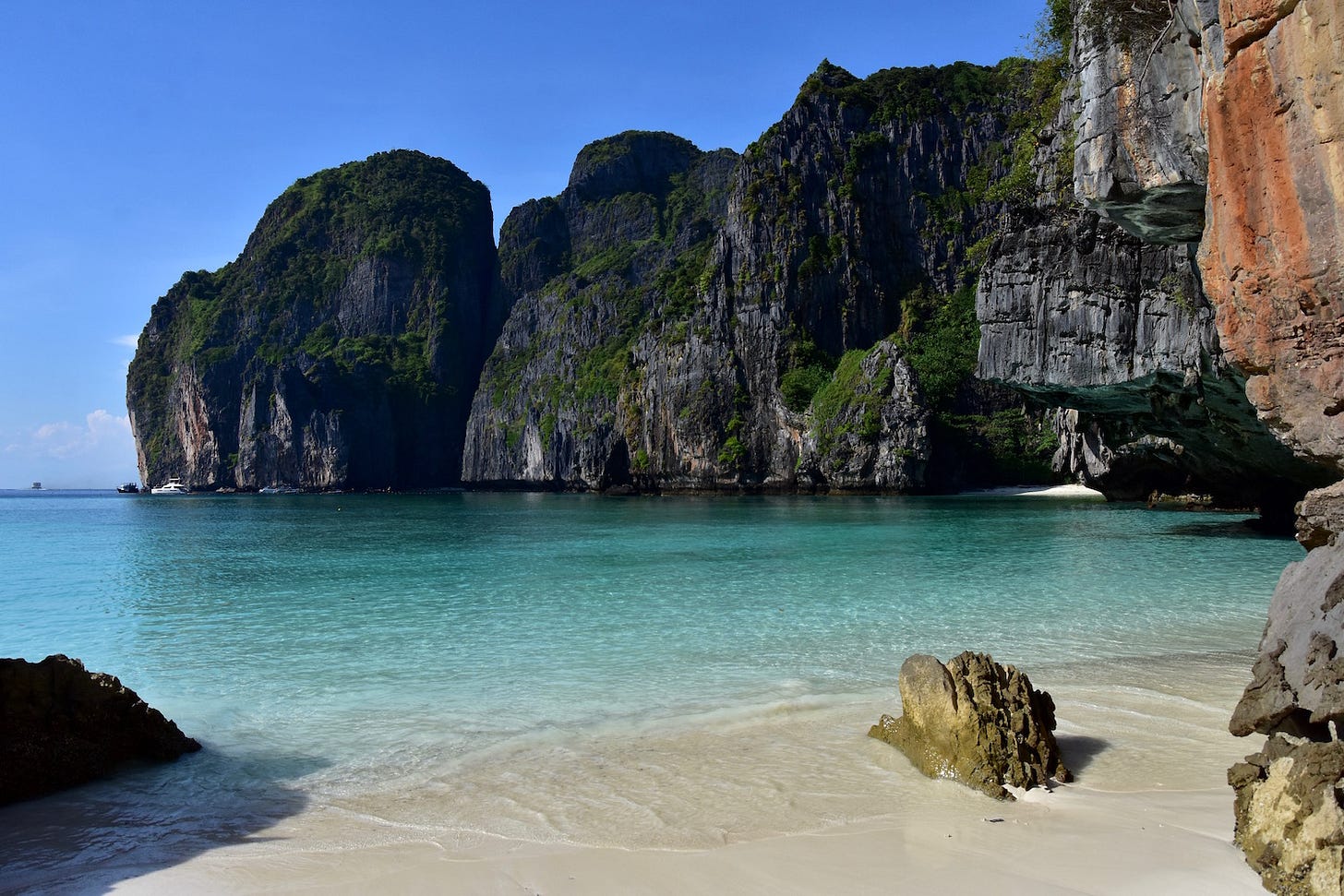
A bit chaotic at Ao Loh Samah
Rather than plunge over waterfalls and swim for miles like Jack does in The Beach, we visited Ao Maya with P’Nut, a native of nearby Ko Jum who splits his time between his home island and taking tourists on longtail boat tours out of Ko Phi Phi Don. A skilled boatman like him, coupled with the flexibility of booking locally, can make all of the difference when hitting a popular site like Ao Maya.
Visitors are now able to experience a relatively quiet Maya Bay because all of the rowdy comings and goings unfold at the rock-rimmed bay of Ao Loh Samah on the west coast of Ko Phi Phi Leh. From there, visitors climb a set of stairs and walk a couple of hundred meters across the island on a slightly elevated walkway to reach Ao Maya. Looking to the future, this new entrance is what worries me.
For now, Ao Maya is open to anyone who can find a spot at the floating pier and cough up 400 THB (per foreign adult) to the national park. Having casually booked a private longtail boat from the northern end of Ao Tonsai on Ko Phi Phi Don, neither we nor the boat driver needed to obtain any permits or make any reservations in order to visit Ao Maya. We simply got in the boat and went.
Dozens of anchored longtails bobbed as we approached Ao Loh Samah in the afternoon. A few speedboats also jostled up to Ao Maya’s new backdoor entrance. P’Nut had no problems getting us safely docked on the small pier. It wasn’t too crowded at this point, but a few large groups of travelers can be enough to clog things up both here and a little further up the trail.
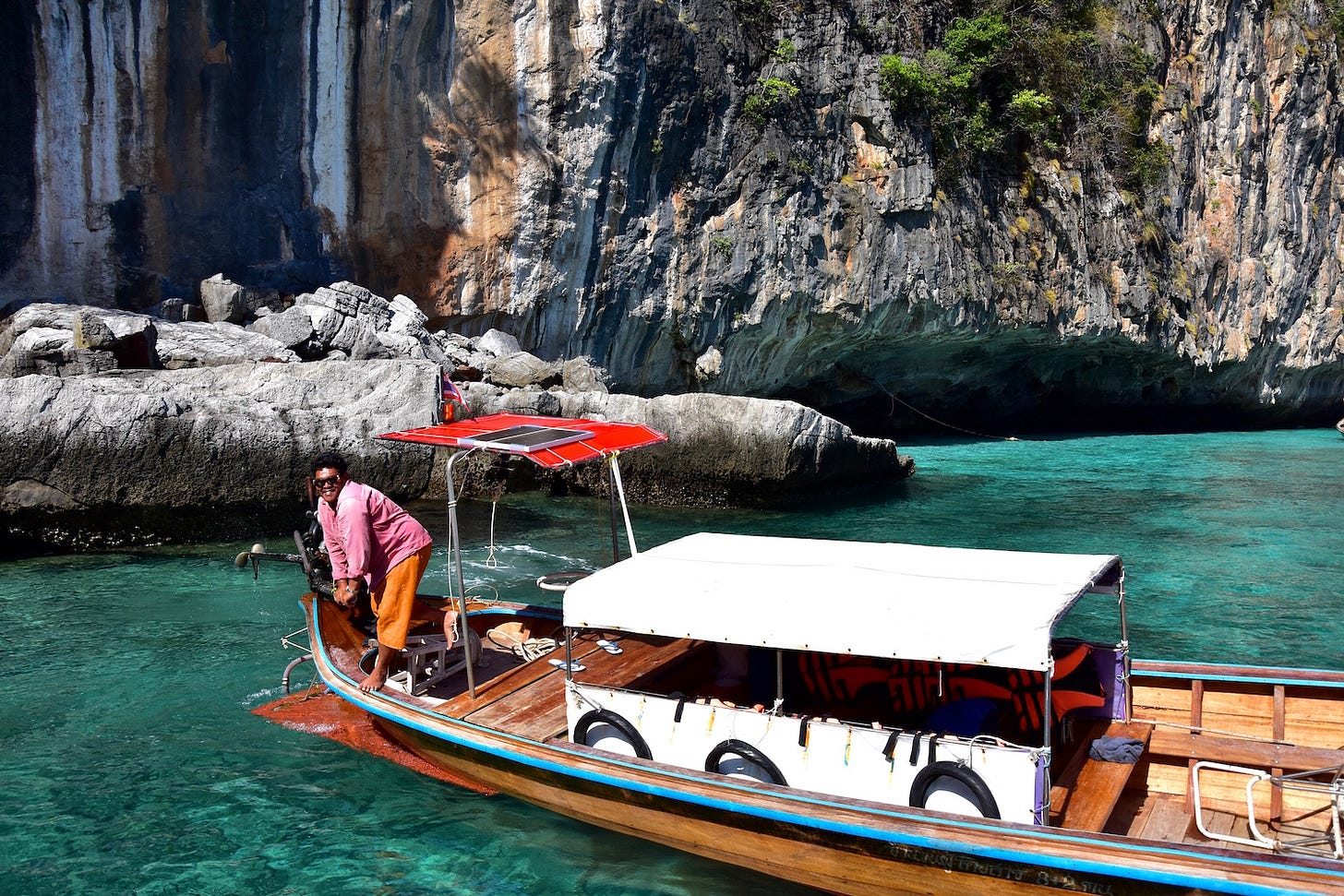
Within Ao Loh Samah lies a reef that attracted divers and snorkelers before the modern entrance was engaged — and this bay seems to have been chalked up as a sacrifice needed to keep boats out of Ao Maya. Essentially, all of the boat traffic has been retrenched on the east coast of Ko Phi Phi Leh at Ao Loh Samah.
Along the walkway in the diminutive interior grounds, between Ao Loh Samah and Ao Maya, is where you’ll find the toilets, a shop selling cold drinks, and the old DNP-maintained buildings. Overnight guests were once allowed to stay here or pitch tents by the beach. That is no longer the case.
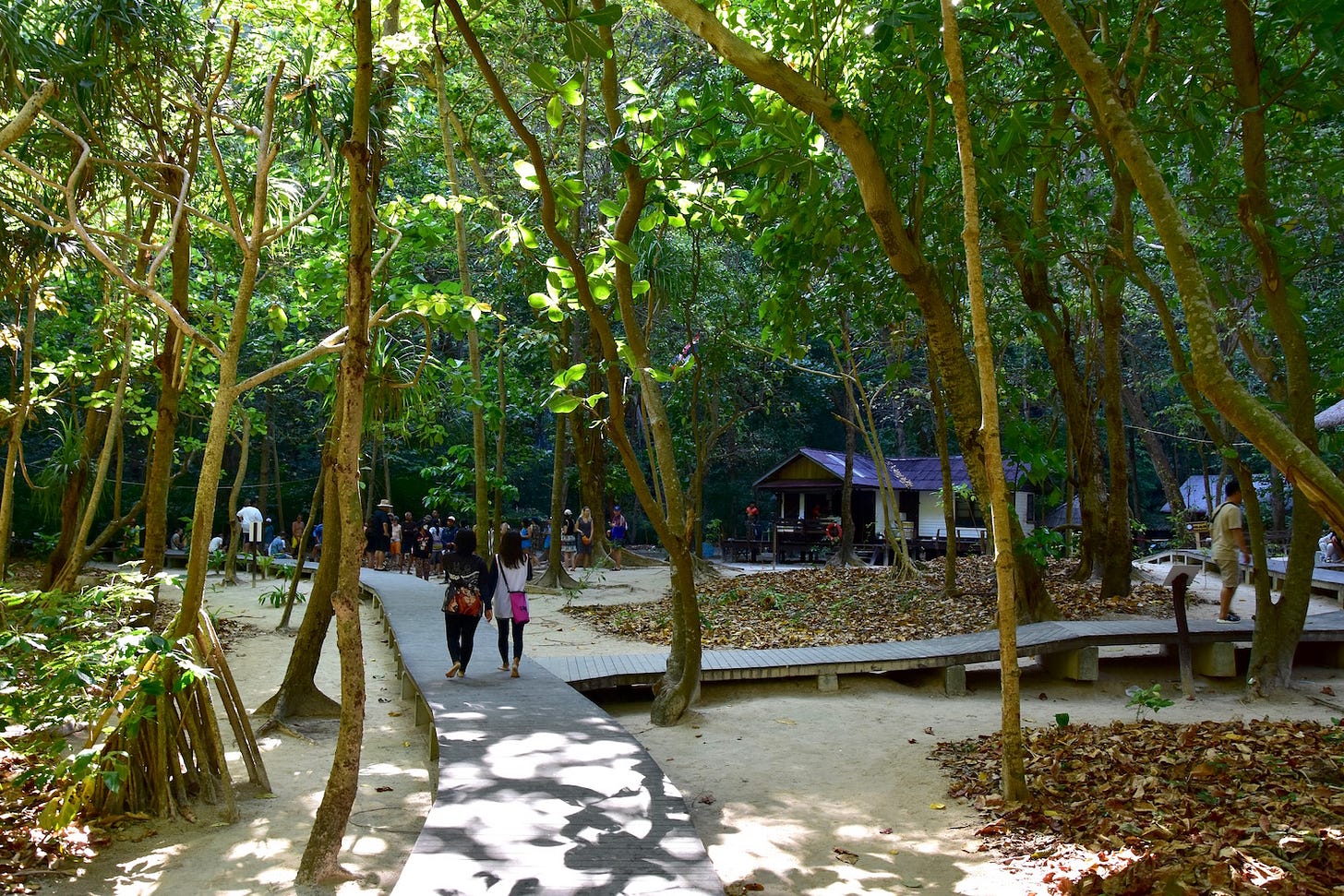
Returning to the pier at Ao Loh Samah after our time at Ao Maya, things got a little more chaotic. It took a few minutes for a crowd to clear through that bottleneck of a stairway leading back down to the floating pier. When this stairway is crowded, as is often the case, a bad fall or shove on it could be tragic.
I picked up on a slight sense of competitiveness in the crowd as the many boat drivers circled around looking for their guests. P’Nut soon spotted us and was again able to pull up to the pier without too much hassle, but I was concerned by the small size and seemingly chaotic nature of both the pier and stairway. Pack your patience if you go, and do keep young kids close by during this part.
Where the boats can’t roam
Safely out of Ao Loh Samah, P’Nut circled around the southern tip of the island to deliver us a view of the nearby Ko Bida twins, a smaller set of rugged karst isles, before rumbling along the west coast of Ko Phi Phi Leh. There we could glimpse Ao Maya from hundreds of meters away — as close as boats are now allowed to go. From this vantage, too, Ao Maya looked and sounded serene.
The reefs in this area and near Pileh Lagoon looked banged up, not that I’m an expert. I did see quite a few fish while snorkeling. Reefs that are being rehabilitated, not only at Ao Maya but also at many other sites, such as Ko Yung off the north coast of Ko Phi Phi Don, are strictly and indefinitely closed to boats and snorkelers.
A tentative win?
Maya Bay, like any good paradigm, will probably always present more questions than answers. But I do think that progress towards a more sustainable balance between tourism and conservation has been made, not only at Ao Maya but also other parts of Thailand’s 26 marine national parks, as well as its marine wildlife sanctuaries, forest parks and other protected areas. Positive change is happening.
Still, if Thailand again draws upwards of 40 million international tourists per year, or more, I would not be surprised to see the new Ao Maya entryway become uncomfortably, and perhaps even dangerously, crowded. That could prompt another indefinite closure or the introduction of a permit system, something that strikes me as being potentially very contentious and difficult to implement at Ko Phi Phi. There is also the impact of boat traffic on Ao Loh Samah to consider.
In weighing how Ao Maya and similar sites should be managed in the future, I do hope that authorities keep local boat drivers like P’Nut in mind. My hope is that they can keep earning a modest income while a reasonable number of tourists can enjoy this natural wonder at the same time that it’s being protected and rehabilitated. Without a doubt, this is one challenging needle to thread.
No matter how the next chapter in the Ao Maya saga unspools, a return to the days of this sublime bay being a rowdy parking lot for boats seems unlikely. That alone strikes me as a win, tentative as it may be. 🌴
Thank you for reading Thai Island Quest. For the love of the islands.
Copyright, David Luekens: All rights reserved.

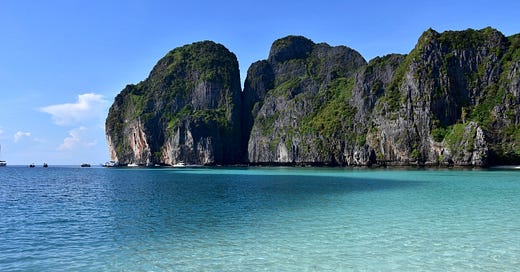



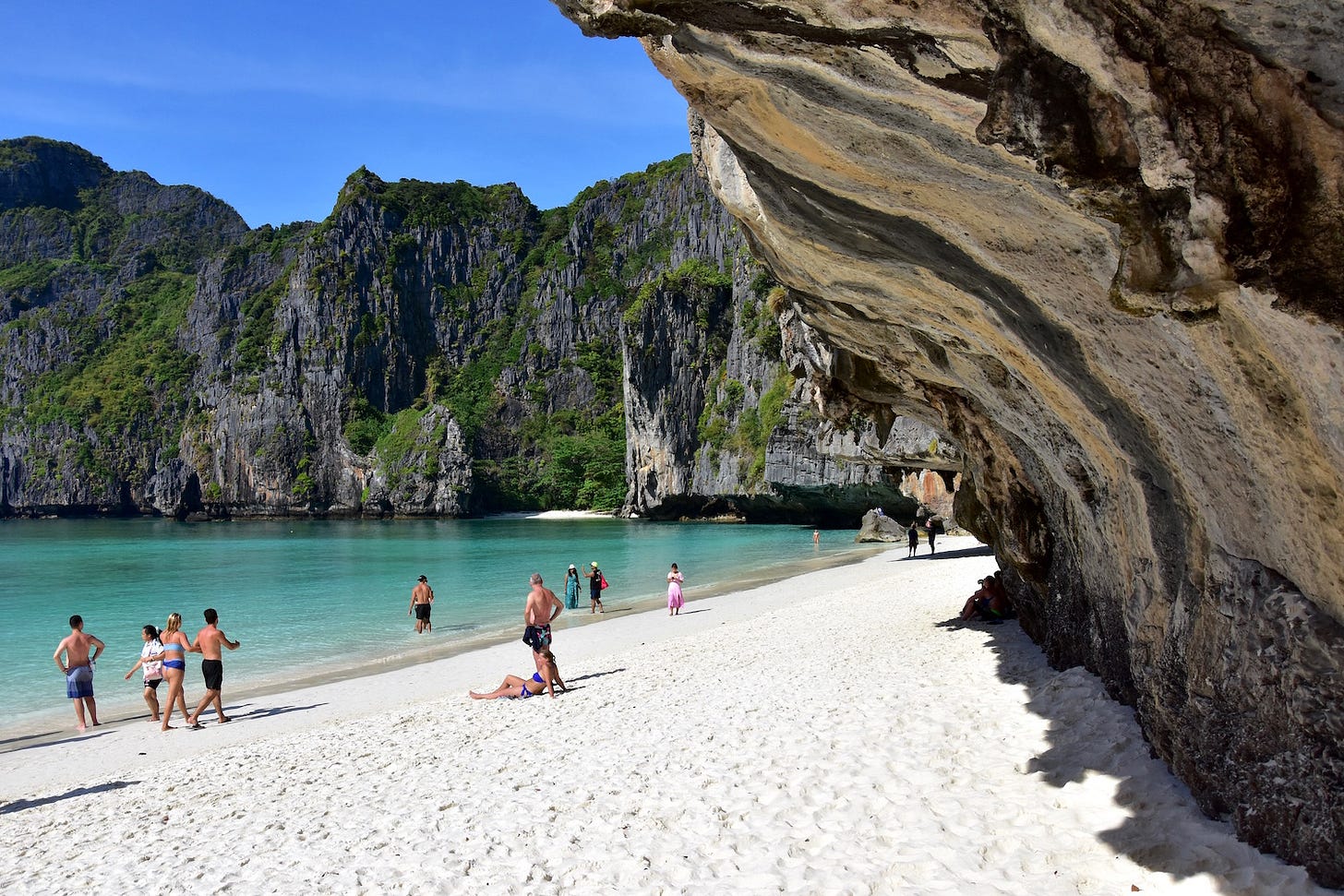
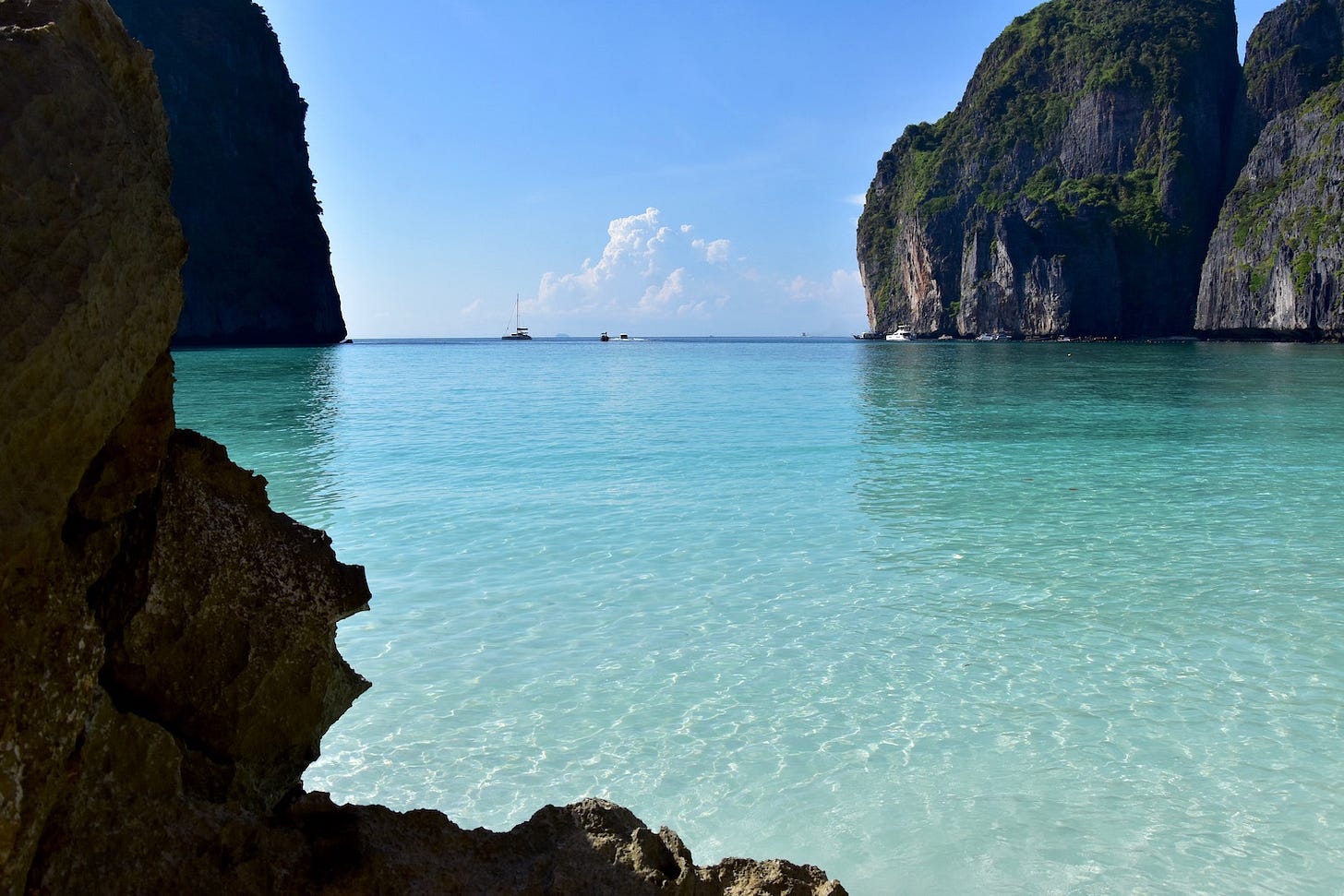
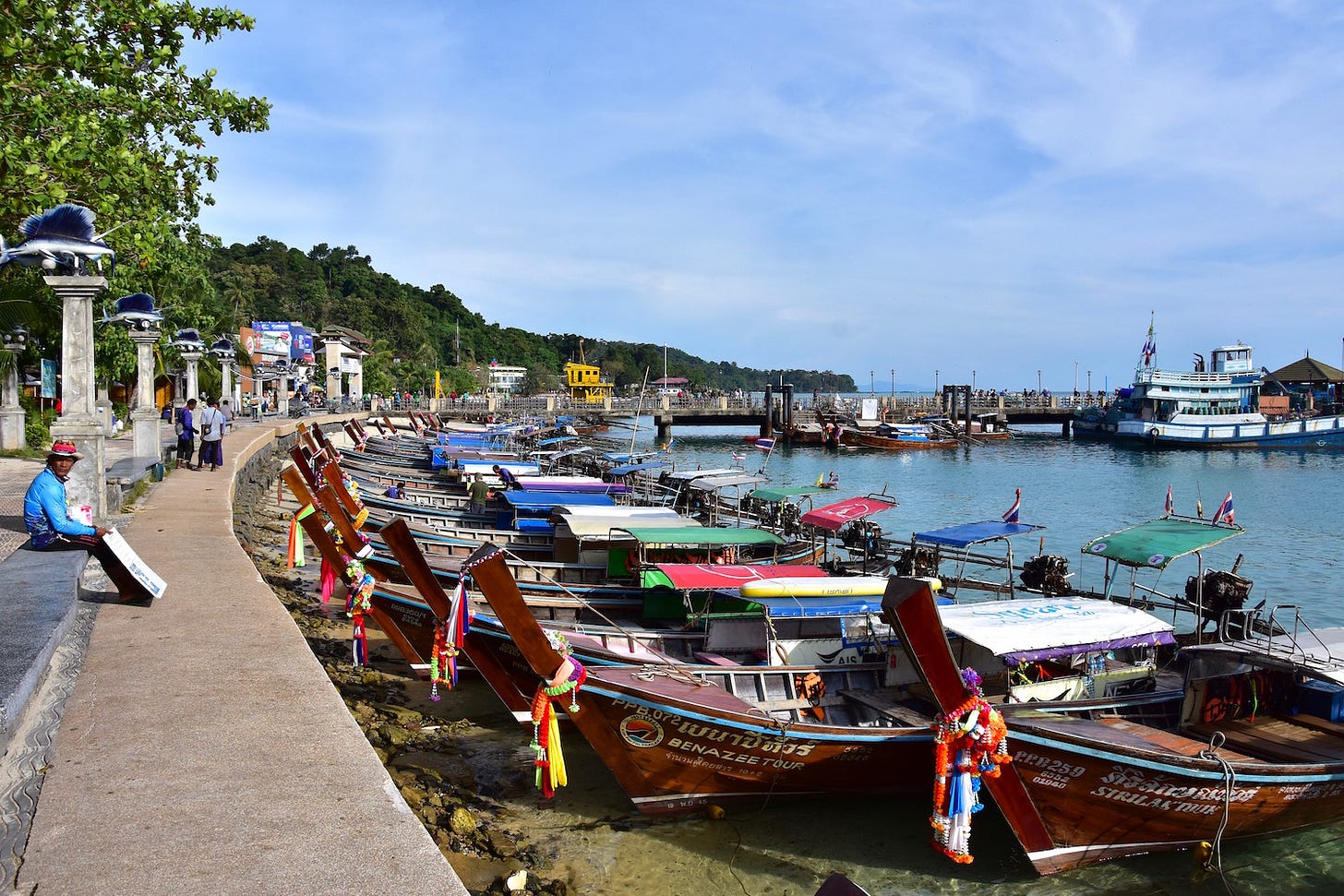
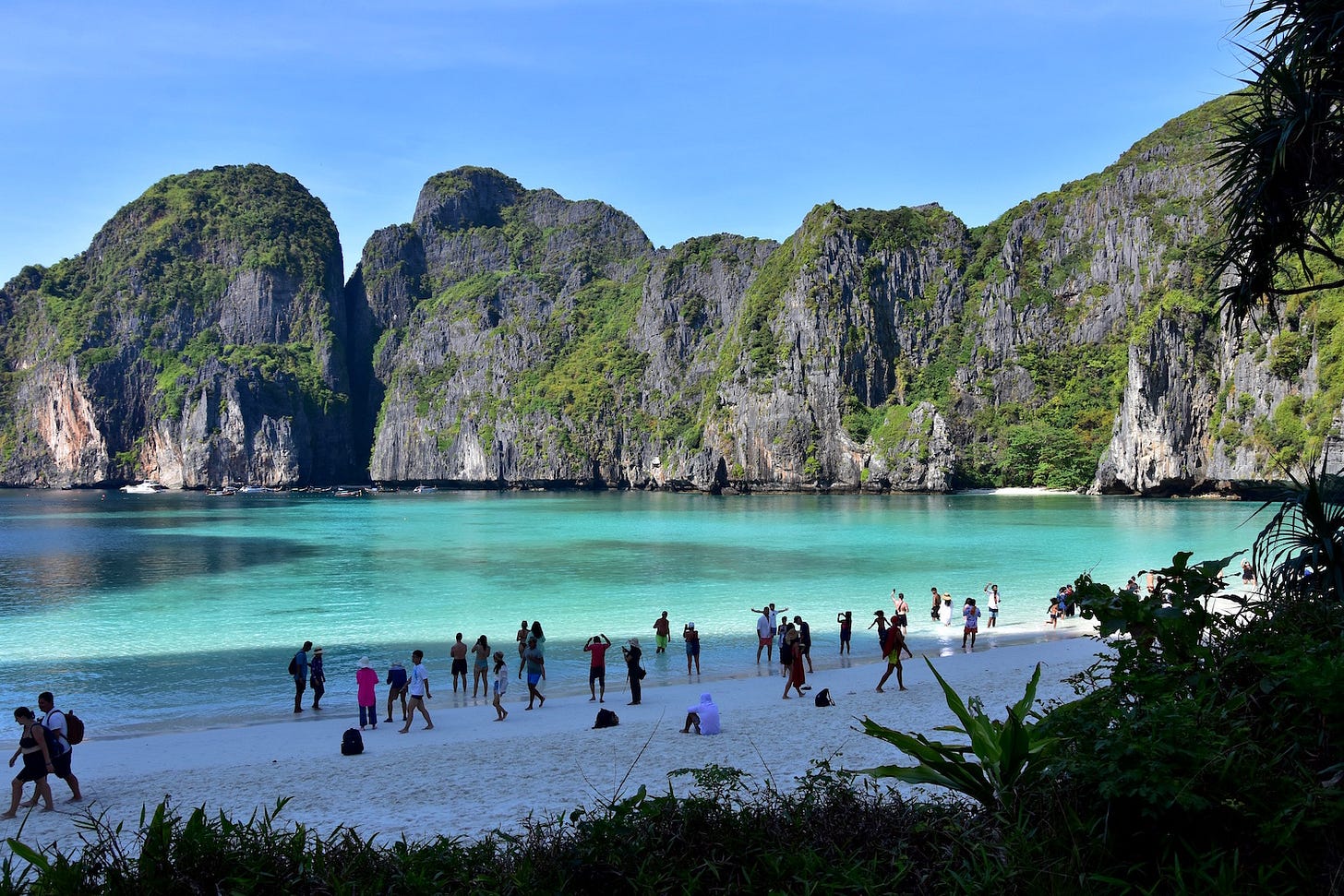
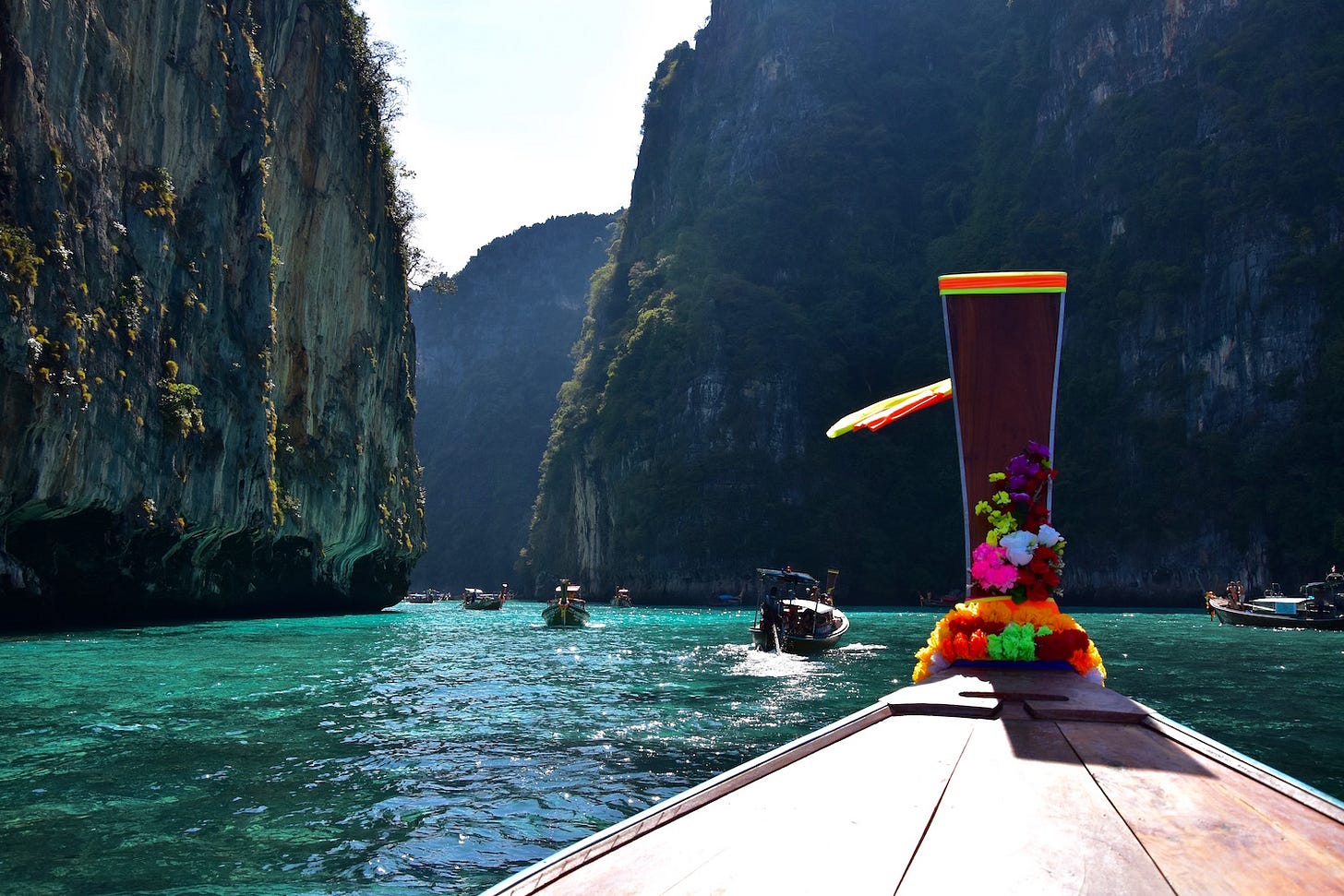
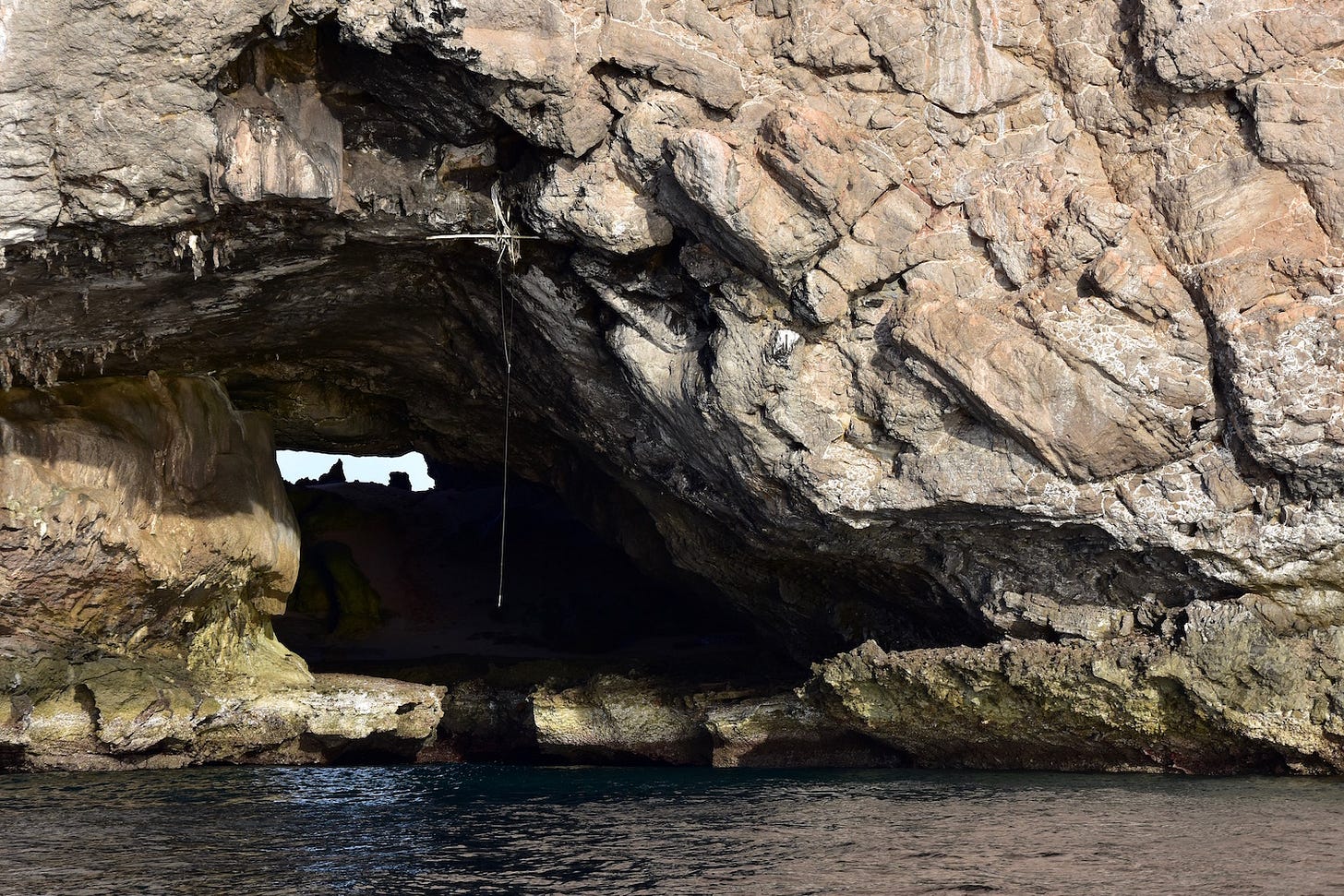
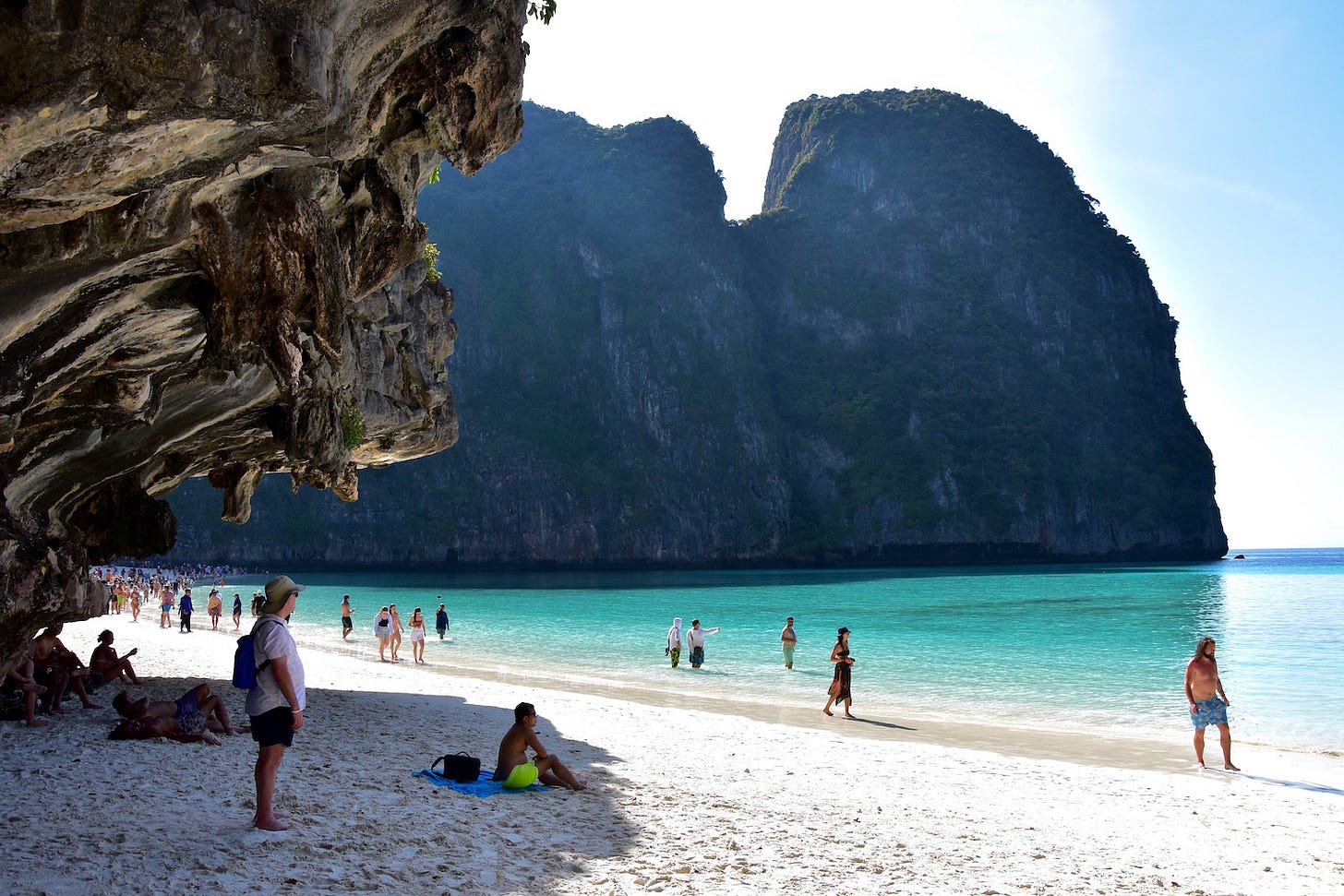
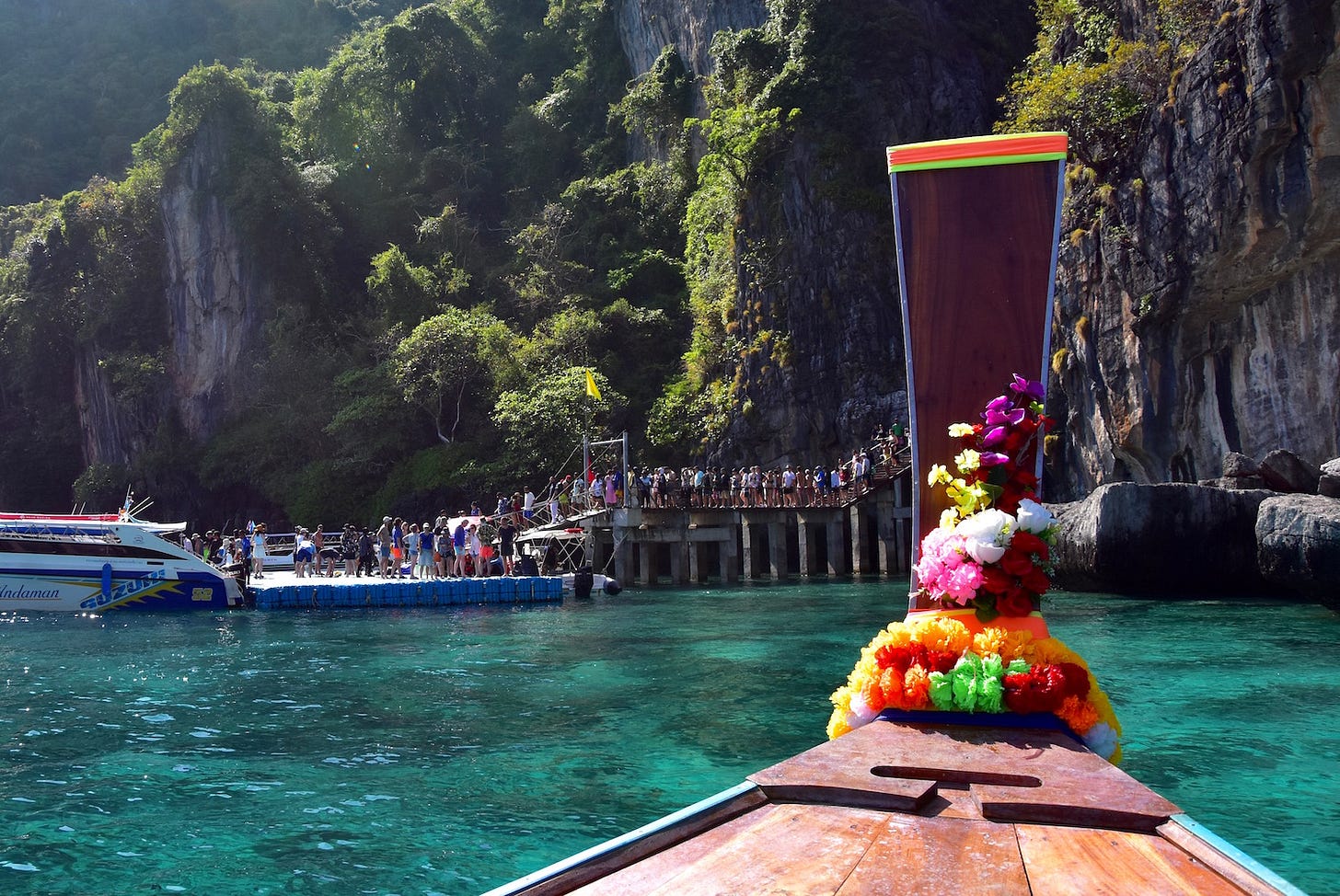


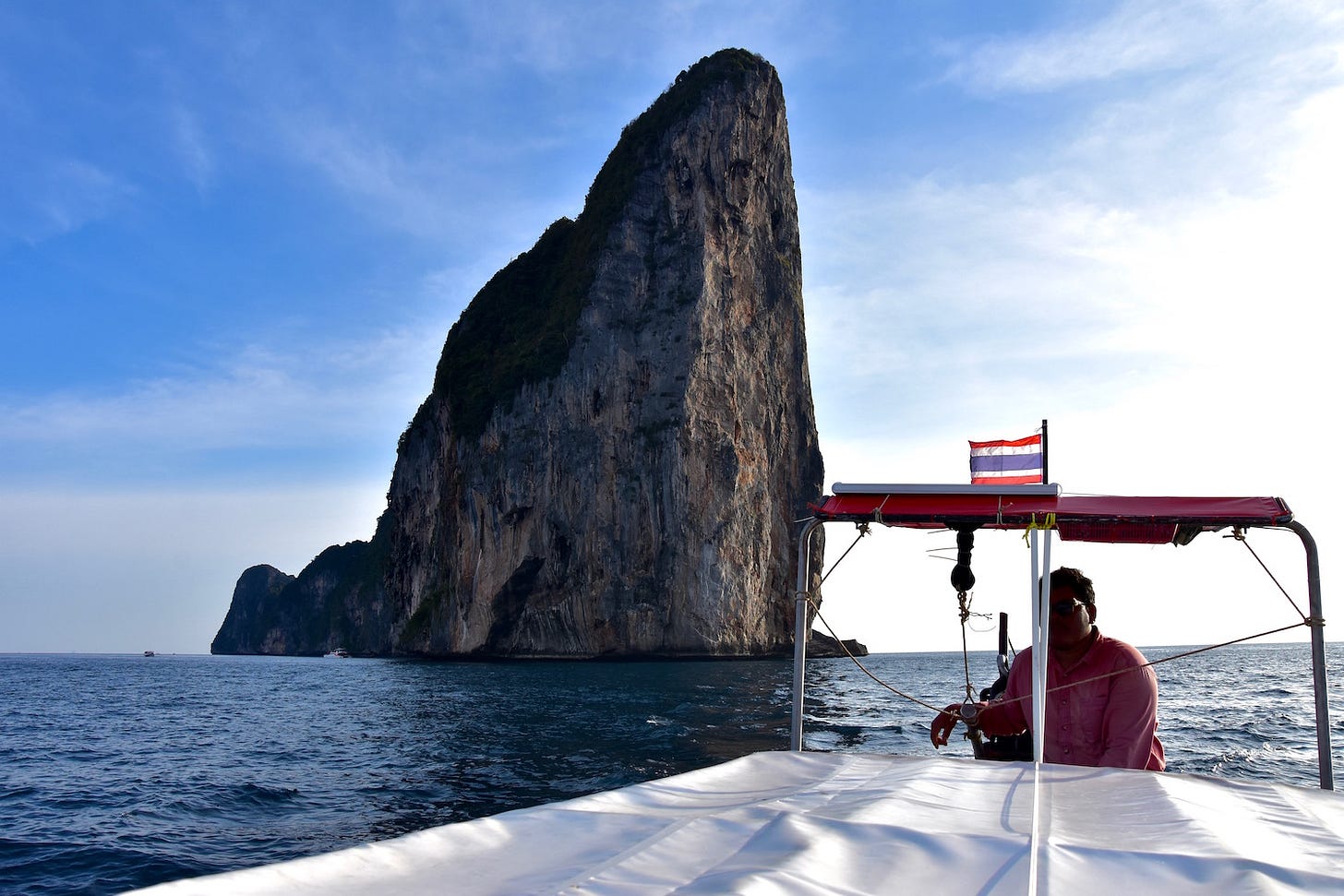
Excellent photographs. They turned out beautifully. It's like standing right there with you. Cheers.
i have only seen Maya Bay twice, while on the boat from Phuket to Koh Lanta, the first time i went to Lanta then again 5 months later when i moved there; the boat passed close enough to behold it, but did not stop- and have only set foot at the pier on the grossly populated Phi Phi Don... it was wonderful being able to see both islands from all our beaches on Koh Lanta! Leonardo diCaprio loved Lanta so much when he visited while filming The Beach that he bought a home there...